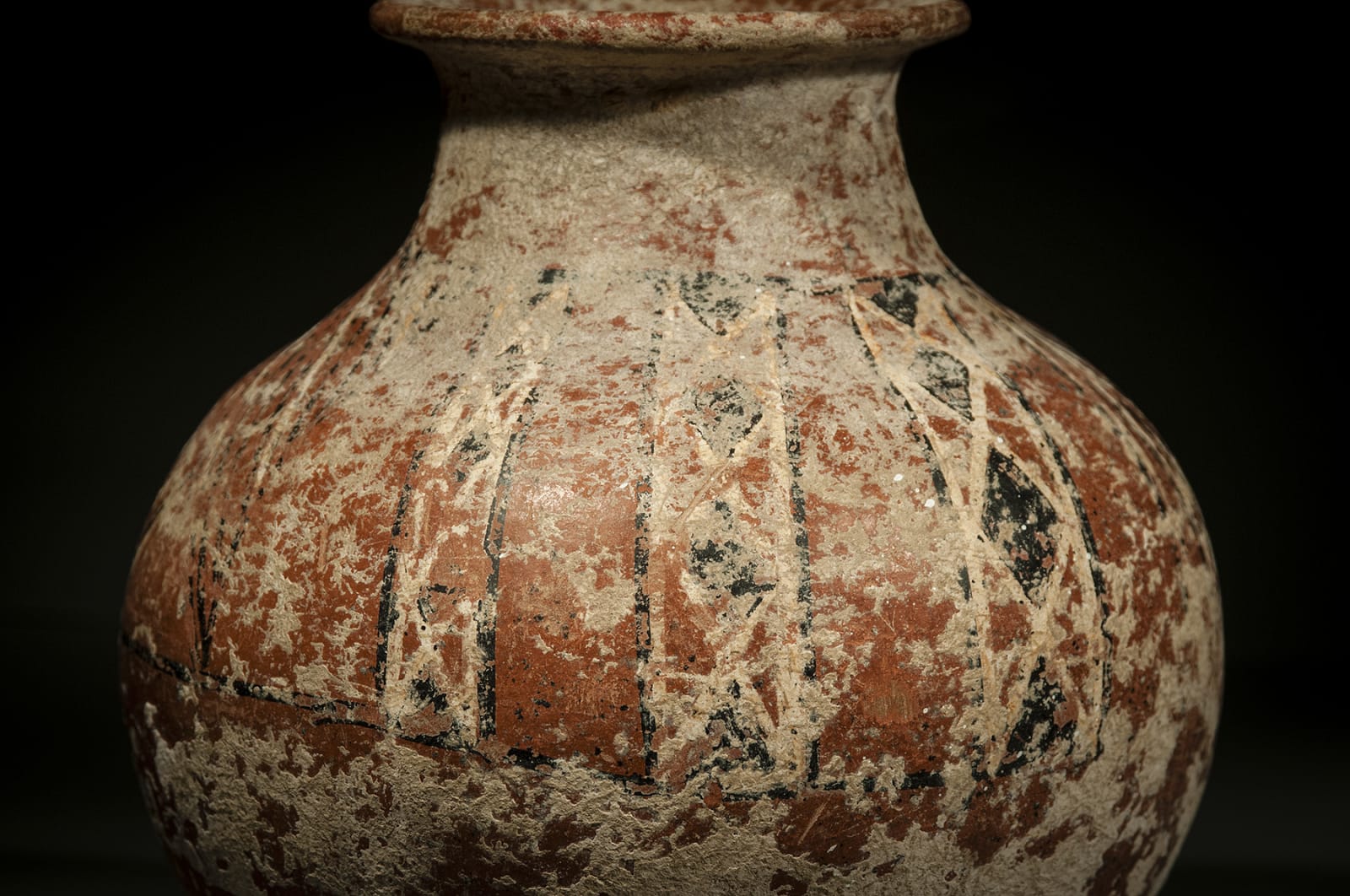Large Painted Phoenician Red Slipped Jar, Iron Age II, 1000 B.C.E. - 850 B.C.E.
H. 20 cm
KB_PT_0005
Further images
Provenance
The Private Collection of the Baidun FamilyMahmoud Baidun (1920-1980) founded what would become Khader M Badiun and Sons Galleries in Jerusalem, Isreal. As a young boy, Mahmoud would accompany archeologists, biblical scholars, and visiting delegations on excavation sites all over Jerusalem and other sites within the country. Earning the trust of scholars and archeologists alike, Mahmoud became an indispensable presence and guide to other visiting scholars. When Mr. Baidun entered the antiquities trade, he would be granted trade license under the British Mandate and from the Hashemite Kingdom. When Israel authorized the trade of antiquities, Mahmoud was issued one of the first antiquities licenses issued in the country. He would later forge close relationships with other merchants; slowly building a massive private collection that would go on to sell to political leaders, international museums, and private collectors globally.
The bichrome decorations on this large jar were typical of Phoenician pottery from the late Iron Age. The painted diamonds and stripes on the jar’s upper half are modest adornments that contrast with the earthy tones of the red slip. Used in antiquity for the simple purpose of holding water or other ointments, this jug would have been one of many useful vessels found in the average Phoenician home.
Dating from approximately 1000 B.C.E. – 850 B.C.E., this jar is only moderately worn from age and remains whole. The jar is 20 cm in height from the flared top of its thin mouth to the bottom of its pinched base.









